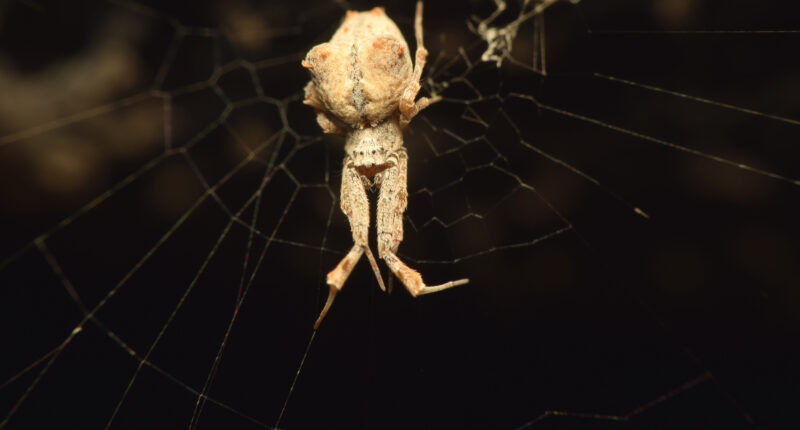RESEARCHERS have recently uncovered the gruesome eating behavior of a certain type of spider.
The feather-legged lace weaver spider (Uloborus plumipes) has long fascinated scientists.
That’s because it kills its prey in a unique way compared with spiders we most often come across.
Common spiders typically use venomous bites to kill their prey, the feather-legged lace weaver, however, uses a combination of silk and toxic fluids.
Researchers explained their findings recently in a non-peer-reviewed preprint on BioRxiv on June 28.
The team, from the University of Lausanne in Switzerland, posited that these spiders produce neurotoxins in their gut as opposed to near their fangs.
This may explain their hunting behavior, which comprises the spiders first catching prey and then wrapping it up in a silken web – sometimes hundreds of feet long.
Then they cover the insect with a mixture of their digestive fluids, which contain toxins.
These toxic fluids paralyze the insect and start to break down its tissues, making it easier for the spider to consume.
“It really looks like there’s something in these digestive fluids that kill the prey,” co-author Giulia Zancolli, an evolutionary biologist at the University of Lausanne in Switzerland, told Live Science.
Most read in News Tech
THE STUDY
To put their hypothesis to the test, Zancolli and her team extracted RNA from different parts of feather-legged lace weavers.
By doing this, the team could identify which compounds the spiders were producing and where.
After assessing their findings, they noticed RNA for several potential toxins in the midgut gland.
This suggested that the spider’s digestive fluid may be toxic as the team found no trace of venom glands.
Some experts believe that feather-legged lace weaver spiders may have evolved to use toxic digestive fluids as a way to survive in parts of the world where prey would be too large or dangerous to attack.
This new discovery could provide insight into the feather-legged lace weaver spiders and our understanding of the various types of hunting strategies employed by spiders.









